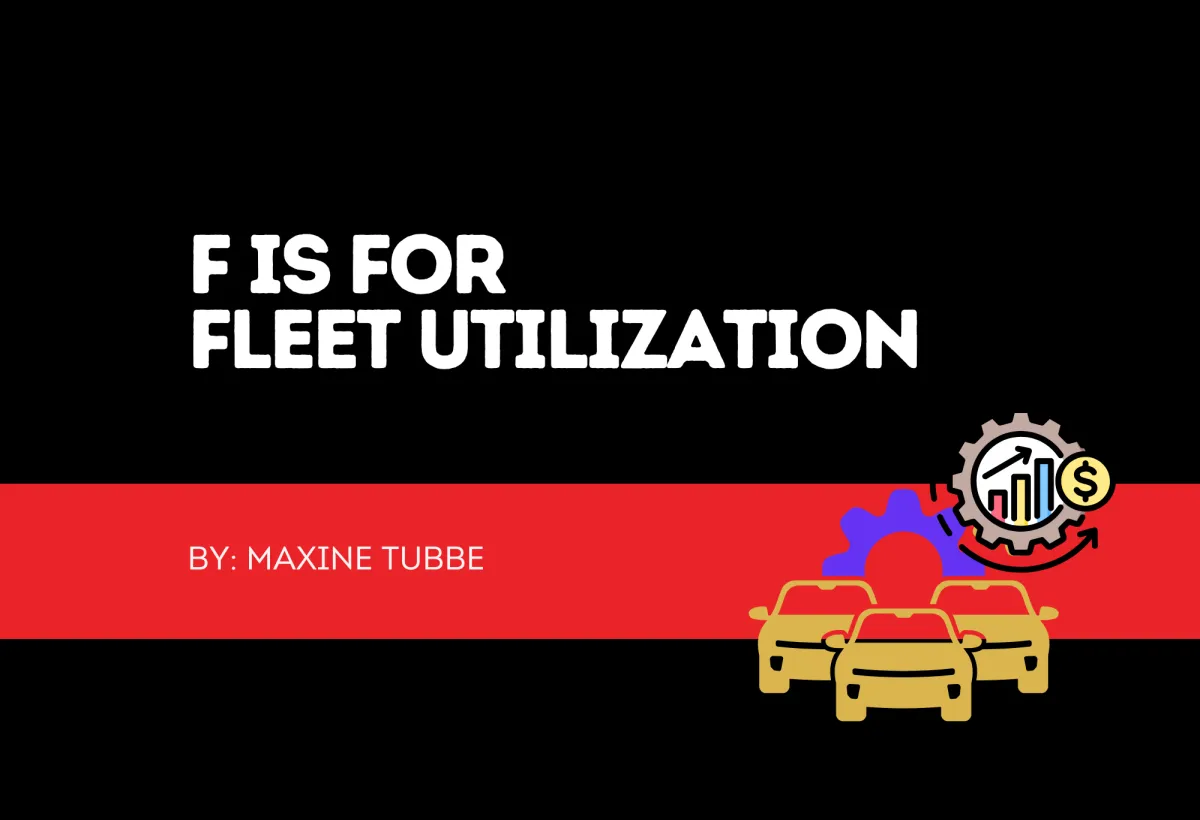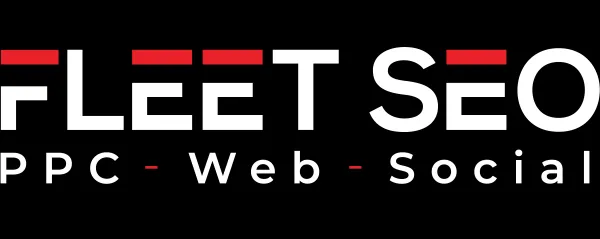
F is for Fleet Utilization
Fleet utilization is the percentage of time your vehicles are on rent and earning money. When utilization climbs (without cutting price), revenue and cash flow rise. This guide shows you where to find problems and the steps to fix them with ready-to-use tools that can lift utilization in the next 90 days.
If your fleet utilization is low you don’t need to buy more vehicles to grow your agency. Fill the dead days first. Track the right numbers, deploy one or two focused promos, and meet every Monday with a simple dashboard.
Higher utilization, at a healthy rate, means more revenue and better cash flow.
The core numbers
Think of these as your weekly checklist.
Available Unit Days (AUD)
Potential days your fleet could be rented.
Formula: AUD = average fleet size × days in period − out-of-service days.Custom HTML/CSS/JAVASCRIPTDays on Rent (DOR)
Total rented days across all vehicles.Custom HTML/CSS/JAVASCRIPTUtilization Rate
How much of your available time you actually rented.
Formula: DOR ÷ AUDCustom HTML/CSS/JAVASCRIPTAverage Daily Rate (ADR)
Average revenue per rented day.
Formula: Revenue ÷ DORCustom HTML/CSS/JAVASCRIPTDaily Dollar Utilization (DDU)
Revenue per available day. Great for comparing classes.
Formula: revenue ÷ AUD, or, ADR × Time UtilizationCustom HTML/CSS/JAVASCRIPTRevenue per Unit per Month (RPU/M)
Monthly revenue divided by average fleet size.Custom HTML/CSS/JAVASCRIPT
Great! Now that we know your average numbers. If you only rent one class of vehicle, that may be all the numbers you need to know to work on improving your utilization rates. But most rental agencies have multiple categories of vehicles. So, lets find out how to drill down further using those same formulas. You’ll find out how to spot the problem areas and how to fix them to increase your revenue!
Why the “average” numbers can mislead you
A 75% overall utilization rate can hide trouble:
One class might be stuck at 46%.
A branch might be quiet midweek.
A channel might bring short bookings that leave gaps.
Break your data down by:
Vehicle class
Location
Channel (direct, Google Ads, OTA, referral)
Length of rental
Customer type (commercial, residential, referral, insurance)
This is how you spot dead days, slow classes, and where price sensitivity shows up. Once you see the pattern, you can run a focused promo or tweak pricing for that class and day, instead of discounting across the board.
This is how you spot “dead days,” slow classes, and rate-sensitive segments.

Your tools
You can work through this article with three ready resources:
Fleet Utilization Workbook
Duplicate the workbook for online use, or Download it as an xls for use with Excel
Includes instruction on how to use the workbook, and a quickstart guide.90-Day Utilization Lift Plan
This document compliments the workbook with a 90-day plan to further improve your utilization rate.“Dead Days Filler” Promo Pack
A selection of Promotion ideas that include guardrails, copy blocks for email/SMS/GBP, ad snippets, a landing CTA, and a tracking code. Use them alone, or track deployments and promo codes in the Fleet Utilization Workbook.
Set up in 30 minutes
Open the workbook and do this once:
In Config, set the Week Start and confirm your class list.
In Fleet_Size, enter average available units per class for the current week.
In Transactions, paste your completed rentals for the last 1–4 weeks. Include revenue and days on rent. If you use a promo or partner, fill Promo_Code or B2B_Source.
In OOS_Log, add downtime by class with a reason (Maintenance, Damage, Paperwork, Other).
The Calculator and Weekly_Dashboard will populate instantly. Now you have a clean baseline.
Diagnose before you fix
With a baseline in place, ask:
Which classes are below 60% this week?
Which ten VINs had the most idle days?
How many unit-days did maintenance remove, and could we schedule those on low-demand days?
Are midweek days soft across classes or only in a few?
Which channels deliver short bookings that leave gaps?
Use the Workbook’s Gap Map 14 Days to mark soft days by class. This turns problems into a simple plan!
Fill gaps without “racing to the bottom”
Huge discounts damage ADR and train customers to wait. Instead, use targeted, time-boxed offers that fill specific idle windows.
Your “Dead Days Filler” Promo Pack contains twelve ready plays with email/SMS/Google Business Profile copy, ad snippets, guardrails, and UTM tags. Examples you can deploy today for Cars, Trucks, RVs and Heavy Equipment. All are adaptable for more niche rentals too.:
Car & Truck Rentals:
Midweek 3-for-2 and Student Midweek for Economy/Compact to lift Tue–Thu
Weekender Plus for SUVs/Minivans. Add more Sunday night rentals
Last-Minute Tonight to turn same-day idle into revenue after 2 p.m.
Extend & Save to keep a car one more night and improve next-day utilization
Contractor Week for Pickups/Cargo Vans to anchor soft weeks with 7-day jobs
Insurance Replacement Priority
Local Errand Special to move trucks and vans
Hotel Desk Special for more same-day rentals
Family Midweek Van to move more SUV, Mini-Van and child seat rentals
Early Bird Pickup to pull demand on idle mornings
Recreational Vehicles:
RV Long Weekend Add-On to fill Sunday nights
RV Midweek Mileage Bundle
RV Early Season Shakedown
RV Remote Work Weekly
Heavy Equipment:
Equipment Midweek Lift to fill Tue–Thu idle days on aerials
Equipment Weekend Hold (2.5-Day) to monetizes weekend idle time
Equipment Attach & Save target any slow Skid Steers, Excavator and Loader times
Equipment Rain-Delay Flex to build confidence and trust in your brand with hesitant leads
How to run a promo properly
Choose 1–2 promos that match the gaps in the Workbook’s Gap Map 14 Days
Publish the GBP post and send the matching SMS/email. If needed, run a short-window search ad.
Log the Promo_Code in each booking.
Watch Weekly_Dashboard for Util, ADR, DDU, and Promo Bookings by class.
Turn the promo off as soon as the gap closes.
Guardrails to protect margin
Set a minimum ADR per class and stick to it. Use bundles and add-ons rather than cutting base rate.
Cap OTA share per class. Open OTAs to fill gaps; close them first when demand spikes.
Do not stack promos. One at a time.
A 90-day path you can follow
The 90-day plan is plug-and-play. It’s built around three sprints.
Days 1–30: Diagnose and baseline
Load recent data. Segment by class, channel, length, and customer type. Label classes as “rate-limited” or “demand-limited.” Build your first Gap Map and prep 12 offers from the pack.
Days 31–60: Fill gaps and prove lift
Set day-of-week pricing rules by class. Launch two midweek fillers. Turn on daily Gap Alerts: if stock is idle inside 72 hours, post to GBP, send one email/SMS, and (optionally) run a narrow search ad that matches the class and date. Start five insurance/body-shop partners using the B2B_Tracker. Standardize prep so turn time drops week over week.
Days 61–90: Scale what works and hold rate
Keep the two best-performing promos. Pause the rest. If any class runs over 80% for two straight weeks, trial a 1–2% ADR increase. Transfer units between locations if one class is hot in one branch and cold in another. Shortlist any vehicle that stays under 55% with weak ADR for de-fleet.
Run a 20-minute huddle every Monday using the Weekly_Dashboard:
Last week’s Util, ADR, DDU
Top idle classes and VINs
This week’s Gap Map and chosen promo(s)
Any turn-time or OOS issues to fix
Common fixes that move the needle fast
Pricing rhythm by day of week (not one flat rate)
Extend-and-save upsell on returning rentals
Delivery/pickup options that unlock short bookings
Maintenance booked on the slowest days and hours
Channel mix controls: let OTAs help only when you have gaps
B2B replacements to stabilize midweek without deep discounting
What success looks like
Each week you want:
A clean Calculator and Dashboard with all rentals and OOS days entered
Gap Map 14 Days filled out for the next two weeks
One active promo with tracked Promo_Code
Measurable movement in Util and DDU without ADR erosion
If Util is climbing while ADR holds or rises slightly, you’re on the right path!
Keep learning and compound the gains
When you find a winner, keep it and document the trigger. For example: “If Tuesday SUV Gap > 6 units, run Weekender Plus; stop when Gap < 2.” That turns guesswork into a system.
Summary
Growth starts with better use of the fleet you have. Fill slow days, track Util/ADR/DDU, and review the dashboard every Monday. One or two targeted promos are enough. Measure the numbers and the plan becomes obvious. Measure today, improve tomorrow.
Stop guessing. Start measuring. When data is measured a plan immerges.
Know your numbers, progress forward and meet your goals.
Next Week on the Playbook…
Letter G dives into Google Business Profile Mastery — If your not appearing in the Local Pack, or if your competitors are taking up the top three spots, you need this!





